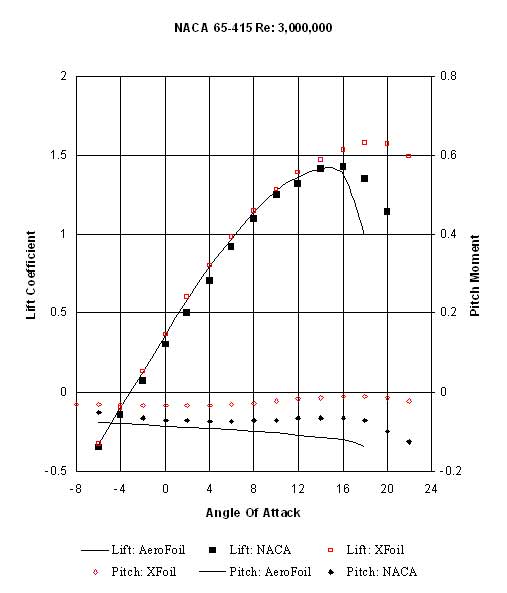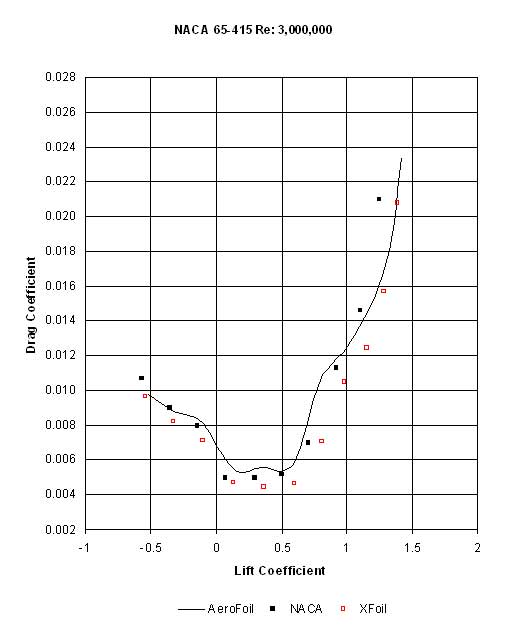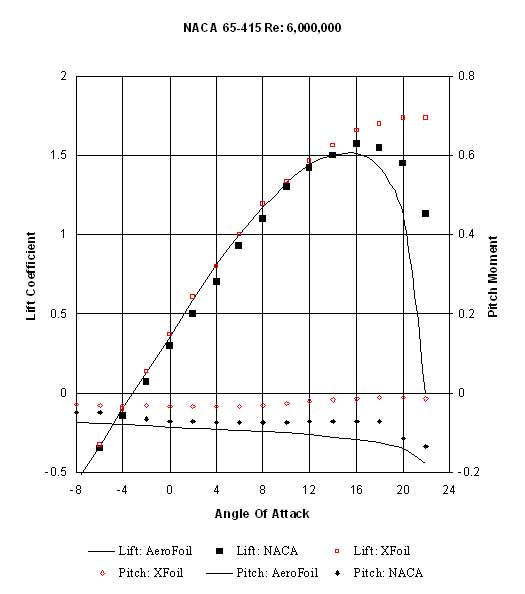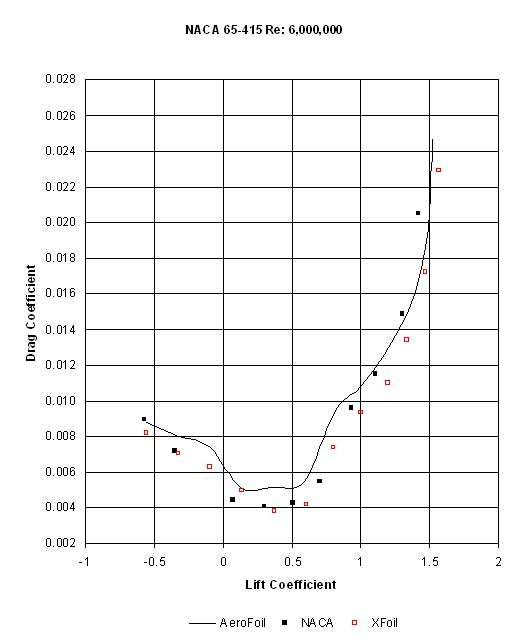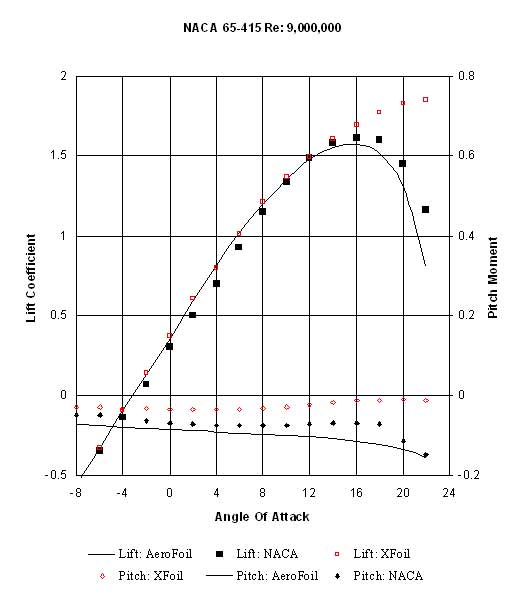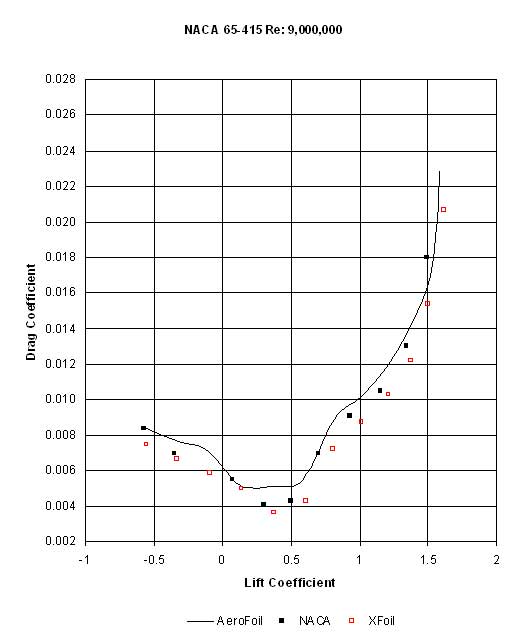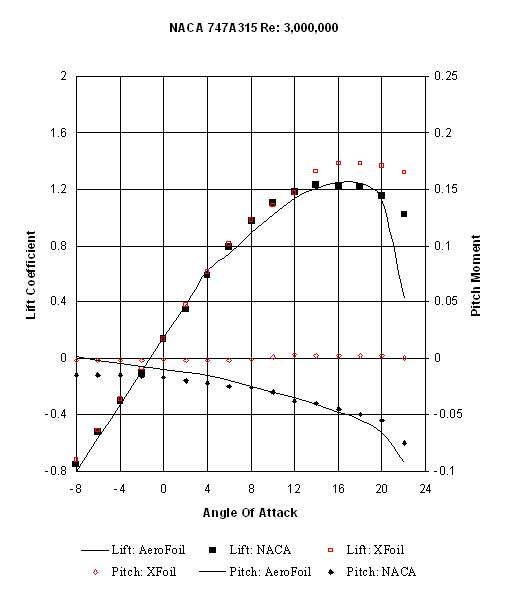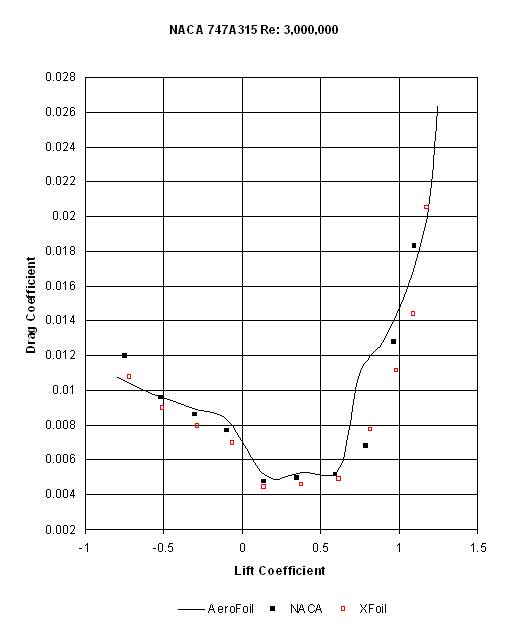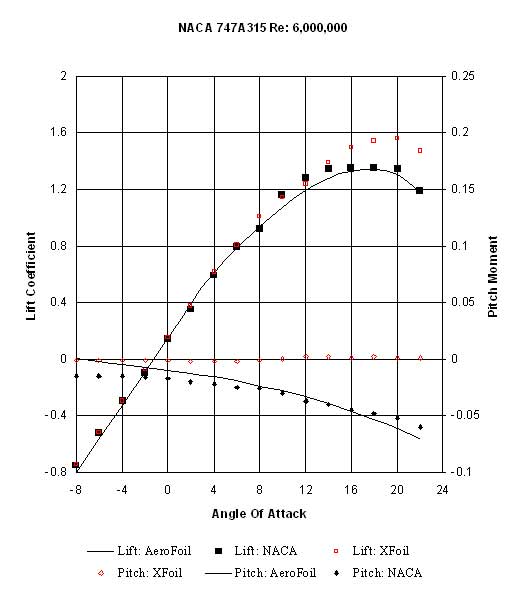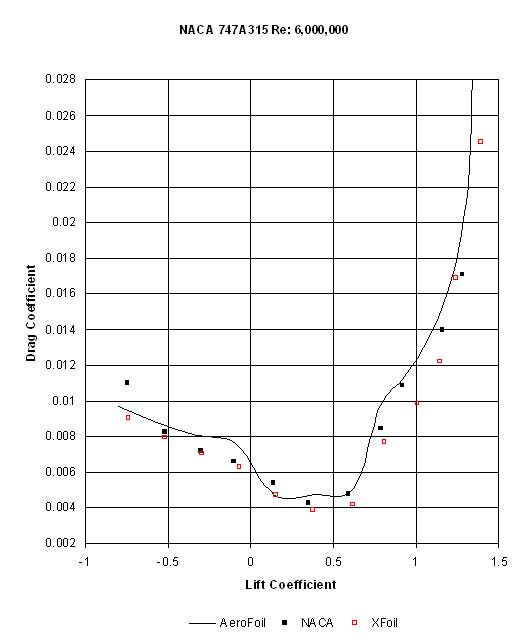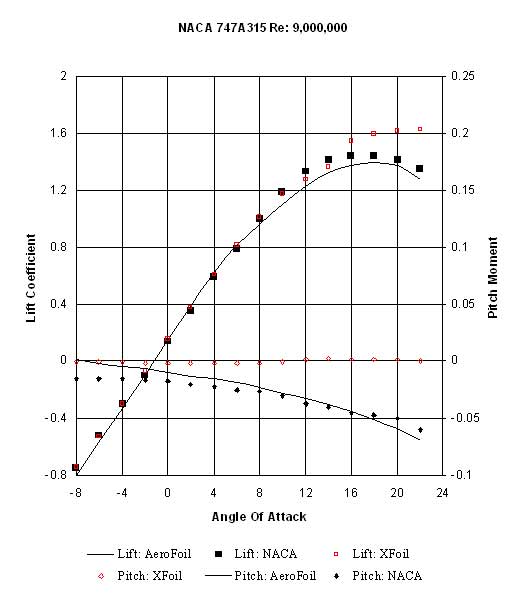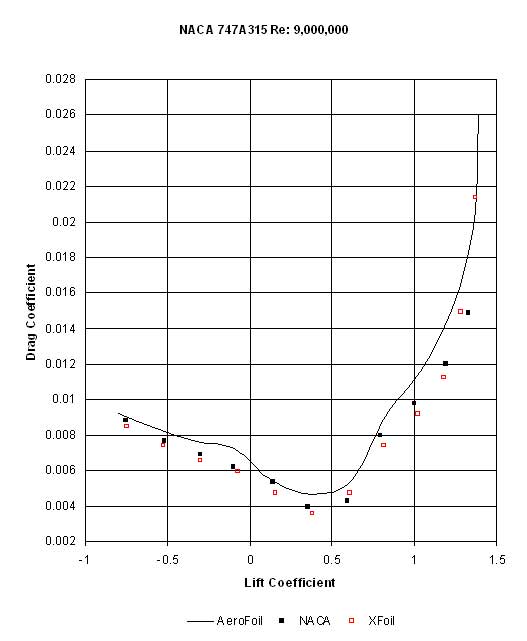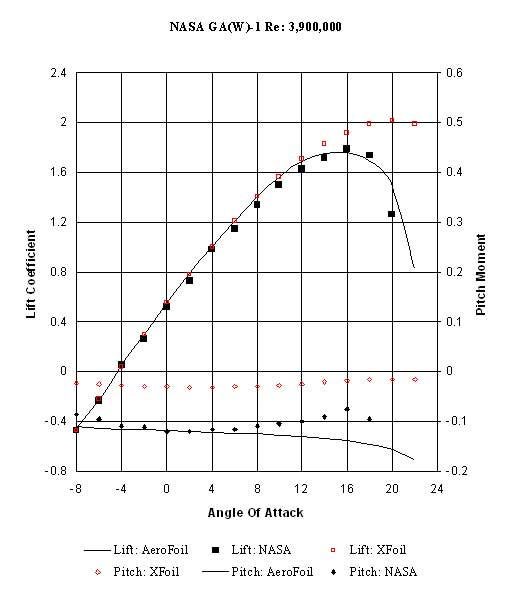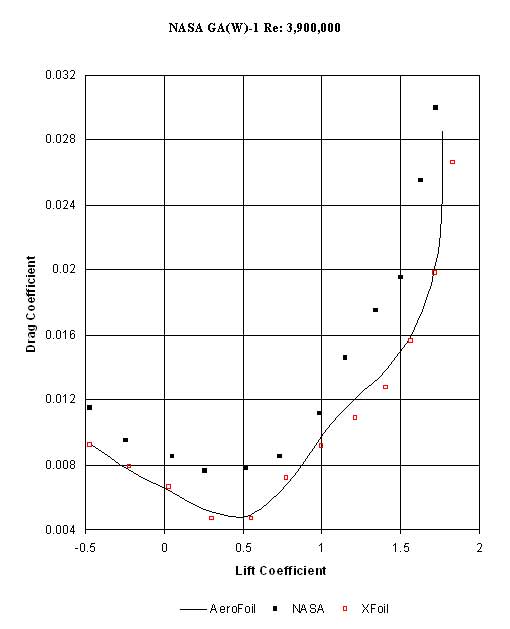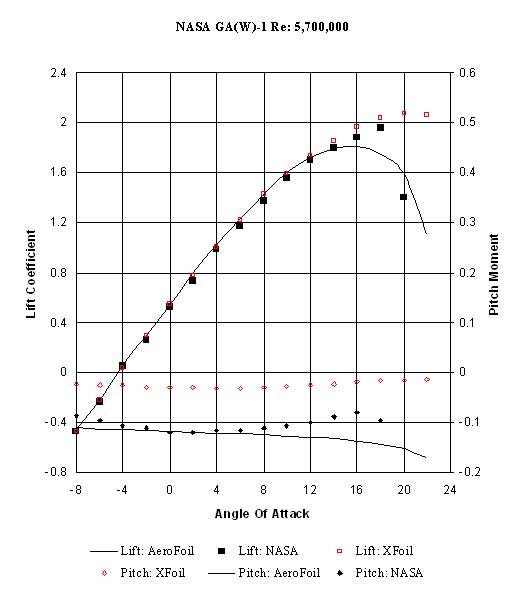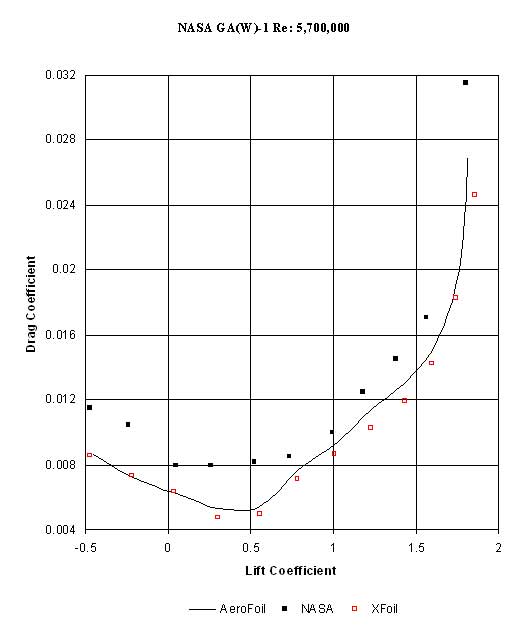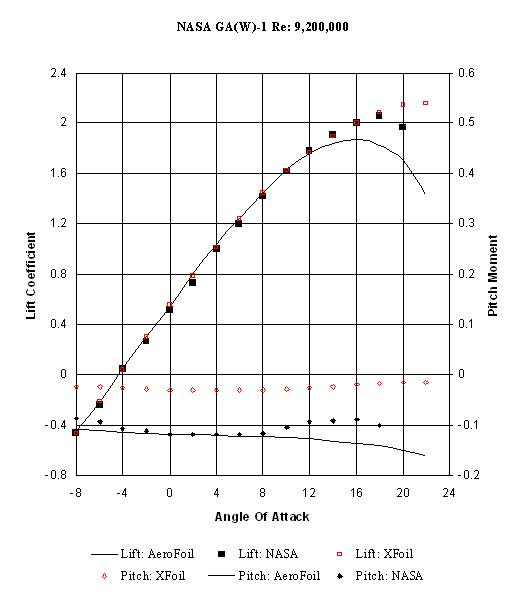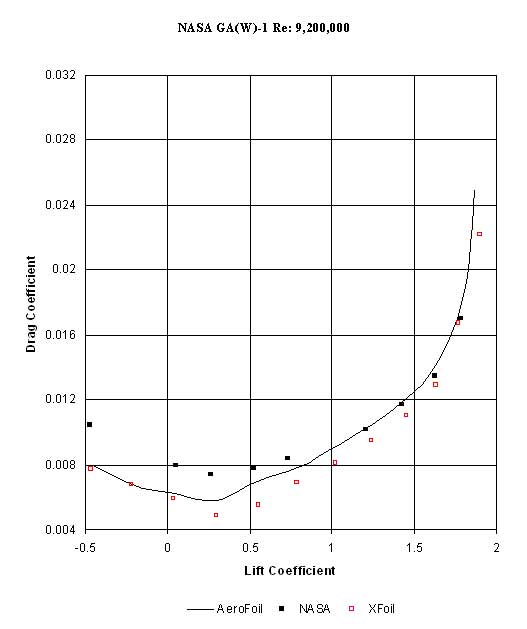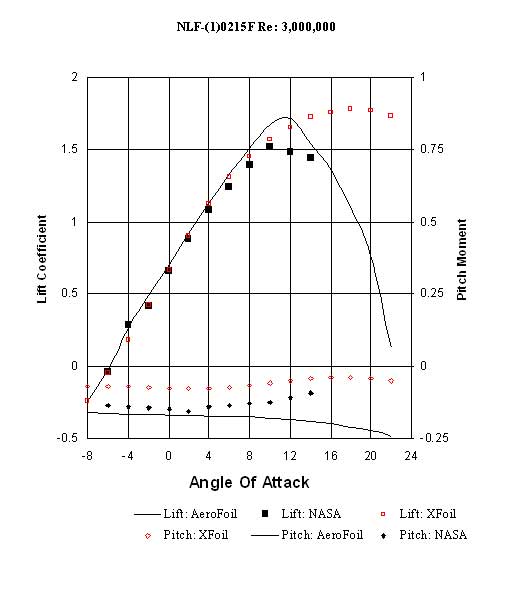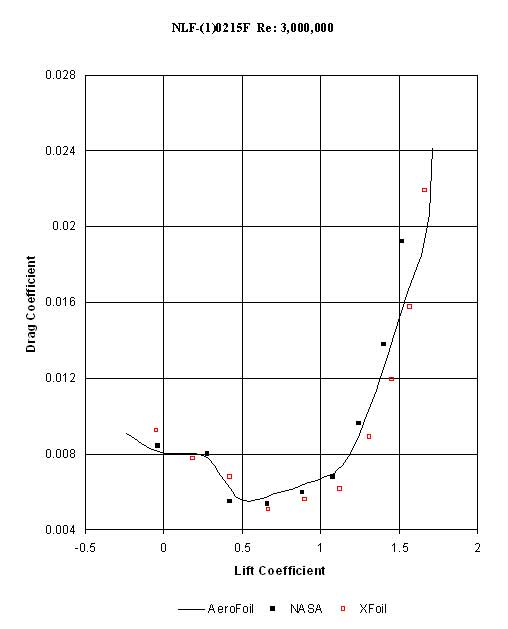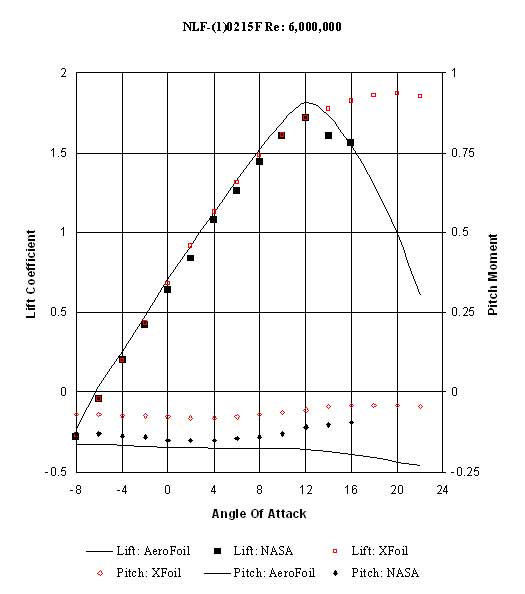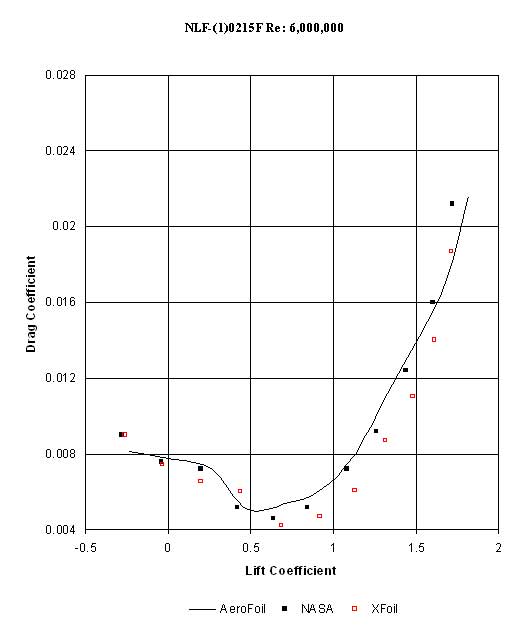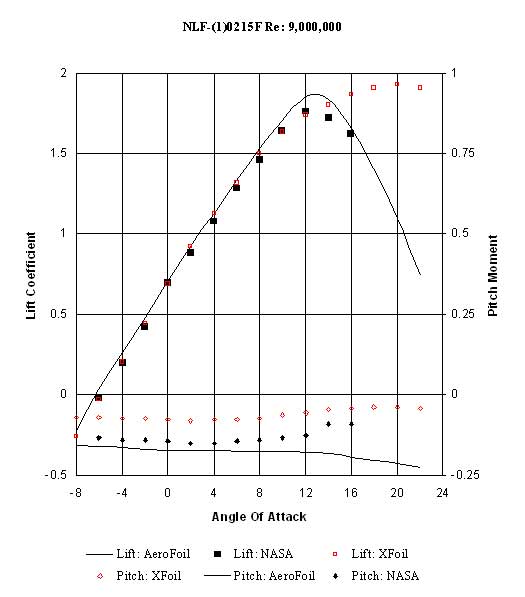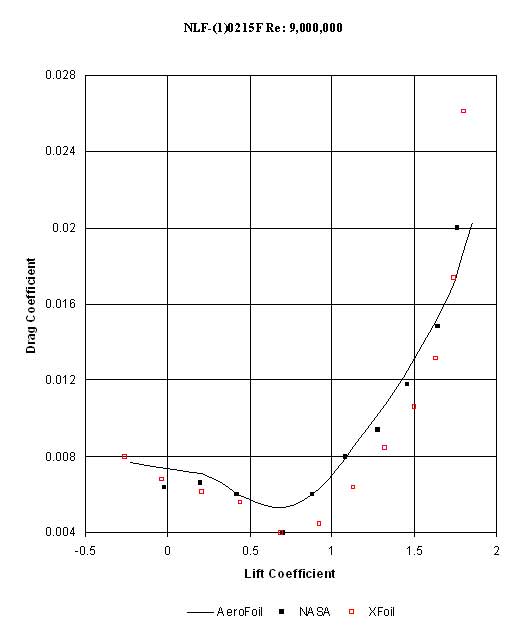|
AeroFoil began as one small part of a graduate class in Computational Fluid Dynamics at the University of Virginia in the spring of 1998 and it developed into a multi-year independent study project. The results of this study were presented in the form of a thesis used to complete the requirements for a Master's Degree in Mechanical-Aerospace Engineering.
Four airfoils where used to validate the calculations of AeroFoil; they are: NACA 65-415 , NACA 747a315 , NASA GA(W)-1 , and NLF-(1)0215F. These airfoils are typical of those in use by general aviation. An equivalent analysis was performed using the computer program XFoil - Version 6.94.
The data files used for both the AeroFoil and XFoil calculations were created using the published coordinate data. Fifty-one coordinate points were used for the NACA 65-415 and NACA 747a315 airfoils. Seventy-five coordinate points were used for the GA(W)-1 airfoil and sixty-one for the NLF-(1)0215F. No effort was made to smooth the data. XFoil analysis was performed with default values of Ncr = 9 and a mach number of 0.1. The airfoil coordinate data was expanded to 140 points through use of the PANE command.
An examination of the data shows the obvious differences in the level of accuracy between AeroFoil and XFoil. XFoil consistantly overestimates the maximum Coefficient of Lift and the angle of attack at which it occures. AeroFoil shows an excellent agreement with experimental data.
References:
- Abbott, I. H. and Von Doehhoff, A. E., Theory of Wing Sections, Dover Publications, Inc, 1959
- McGhee, R. J. and Beasley, W.D., Low-Speed Aerodynamic Characteristics Of A 17-Percent Thick Airfoil Section Designed For General Aviation Applications, NASA TN D-7428, December 1973
- Somers, D. M., Design And Experimental Results For A Flapped Natural-Laminar-Flow Airfoil For General Aviation Applications, NASA TP-1865, June 1981
|


